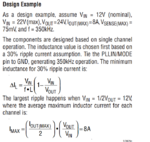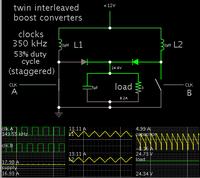bowman1710
Full Member level 3
Hi guys,
I'm looking at a multiphase boost topology and I'm trying to find some calculations for the inductor design. So far I can only find Linear Tech calculation (attached) and make it out to around 28uH which seems a bit high, but it does say its for single phase application. Anyone have anything or know where I can find information about the value I need?
Thanks in advance
I'm looking at a multiphase boost topology and I'm trying to find some calculations for the inductor design. So far I can only find Linear Tech calculation (attached) and make it out to around 28uH which seems a bit high, but it does say its for single phase application. Anyone have anything or know where I can find information about the value I need?
Thanks in advance

